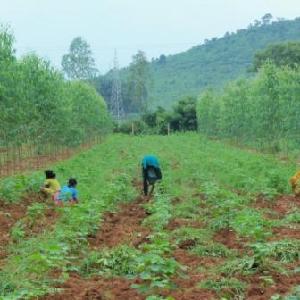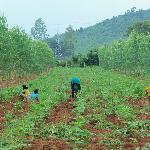
Scaling-up SAI’s agro-forestry model with tribal population in Central India by SAI Sustainable Agro
Please find below the
Finalist Evaluation
Judges'' comments
Appealing proposal for agro-forestry activities to produce both food and cash crop (pulpwood) on degraded land. A good proposal but the judges were concerned about its sustainability.
Semi-Finalist Evaluation
Judges'' ratings
| • | Novelty: | |
| • | Feasibility: | |
| • | Impact: | |
| • | Presentation: |
Judges'' comments
Project has been piloted and seems to be working. Please elaborate on:
Economic benefits to participate in the scheme (versus "business as usual").
Also, please elaborate on how the project's impact might be scaled up.
 Jitendra Sinha Jun 14, 2016 11:47 | Proposal creator Thanks for selecting the SAI's work for moving to the next round of selection process. Yes, the project was piloted in 2013, and it is in the stage of scaling-up under PPP (Public-Private Partnership) model with Forest Department, State Government of Chhattisgarh, India Economic Benefits versus Business as Usual As SAI is working exclusively on barren land there is currently no economic benefits from these lands to the tribal farmers. Through SAI intervention, farmers get economic benefits in three different ways:
At today’s market price, the farmers will get a gross income US$2800 per acre (US$70 x 40 = US$2800). After deducting the harvesting and transportation cost (@US$20 per ton) s/he gets a net income US$2000 per acre in one cycle of plantation (4 years) or US$500 per acre per year.
As such, the total economic benefit to the farmers through agro-forestry intervention is US$790 per year, which is above international poverty line of US$1.90 a day (http://www.worldbank.org/en/publication/global-monitoring-report). The farmer is likely get economic benefits from 4th source through carbon credit once SAI is able to establish its mechanism. As per UNFCCC assessment conducted in SAI field area in Odisha, 50% of the wood mass i.e. 20 tons per acre is atmospheric carbon. As such the farmers can get economic benefit through carbon trading. Scaling up Project Impact SAI has already established its model in 300 acres in Odisha. Impressed by our success, the Forest Department, Chhattisgarh government has recently collaborated with us under Public-Private Partnership (PPP) mode to scale-up the model in tribal dominated regions (Bastar, Sarguja, Raigarh, etc.) of Chhattisgarh by utilizing Compensatory Afforestation Fund under CAMPA (http://www.dnaindia.com/india/report-lok-sabha-passes-bill-on-compensatory-afforestation-2208878). It is worthwhile to mention that recently Indian Parliament passed US$6 billion under CAMPA SAI is enhancing the impact in two ways
With the formalization of this collaboration, SAI has potential to cover 25,000 acres every year in Chhattisgarh. It is anticipated that once the collaboration is proved successful, other state governments will come forward to collaborate with SAI to replicate the model in their states.
|